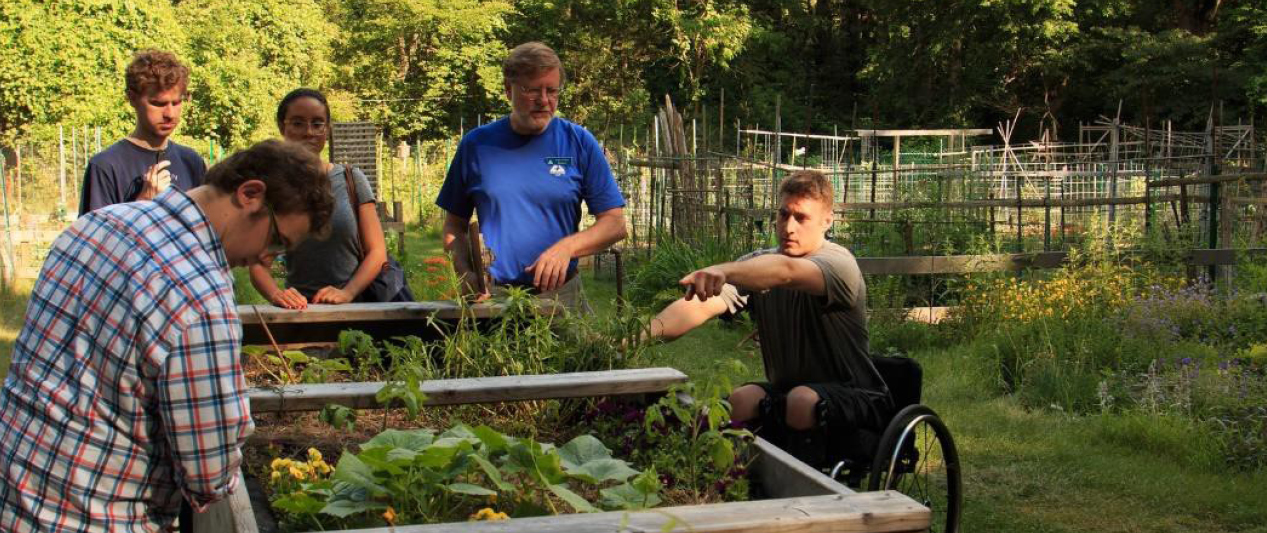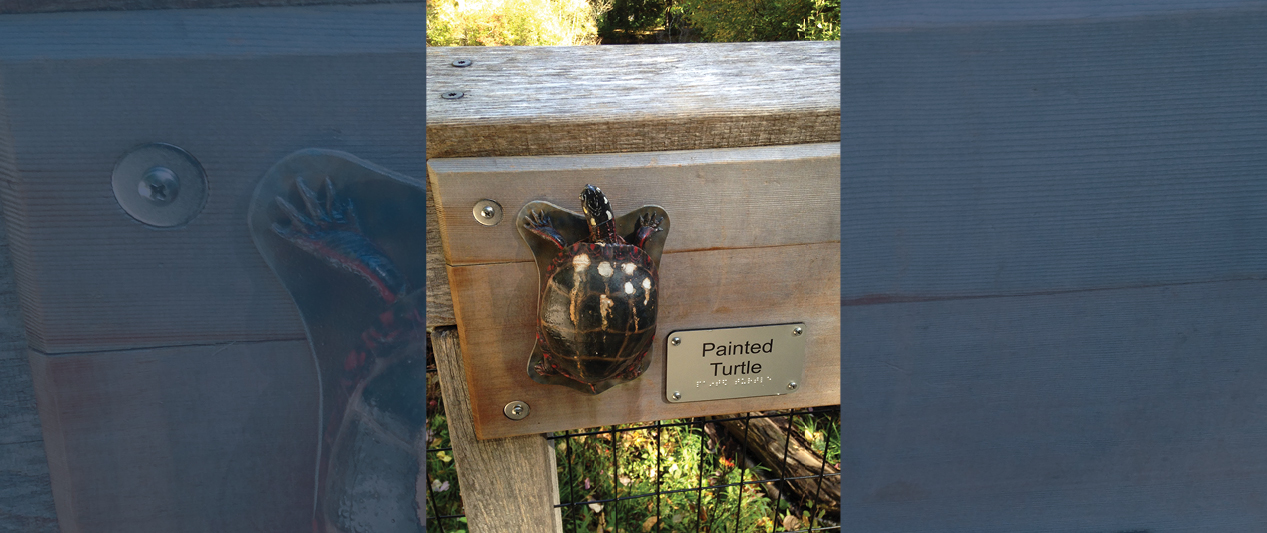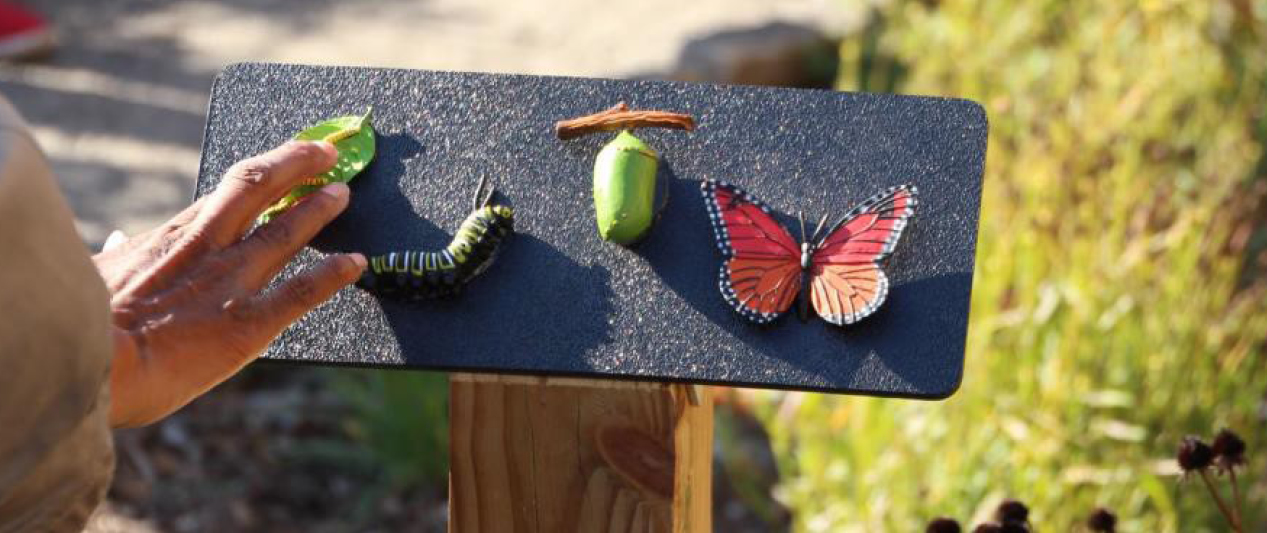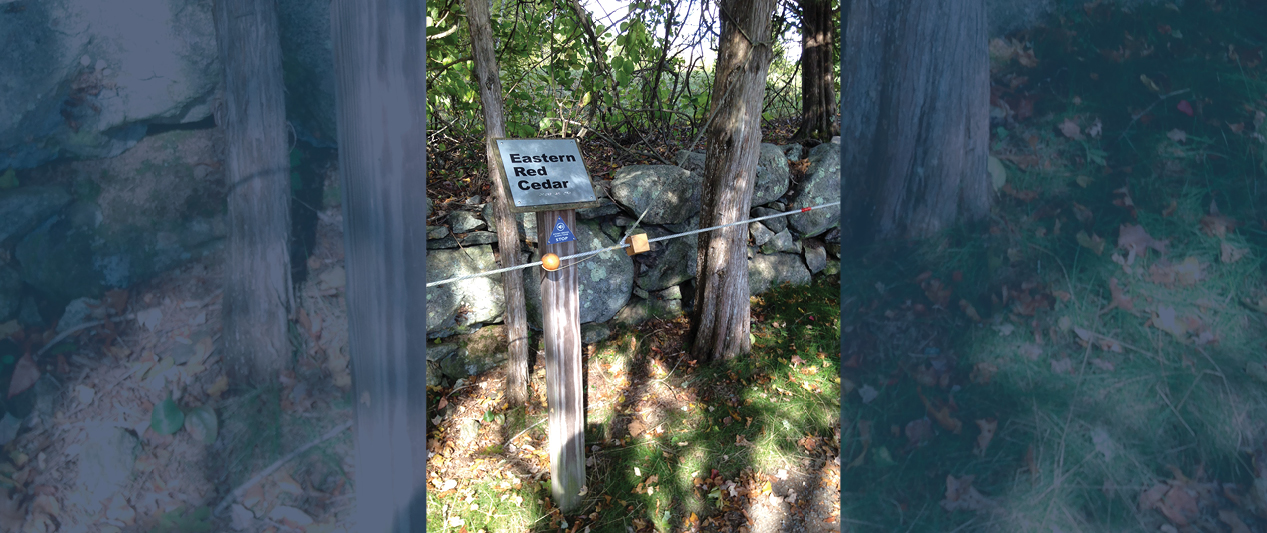 Tactile and sensory elements are features along a trail that are added intentionally to create an immersive experience for everyone.
Tactile and sensory elements are features along a trail that are added intentionally to create an immersive experience for everyone. 
- Tactile elements can be used along any trail as an inclusive feature to create opportunities for everyone. For example, add sculptures of common native species that visitors can touch and learn from. This makes a great stop along an audio tour!
- Sensory gardens engage a user’s hearing, touch, taste and smell to create an immersive experience for visitors. Flowers, herb gardens and other aromatic plants are engaging and educational for all visitors.
- For inexpensive solutions, guide ropes and audio tours can direct users to feel or smell a natural element.
- Tip: When building a sensory garden or adding tactile features, always consider their height. For example, sensory gardens are best in raised gardens where everyone can experience them.

A raised garden bed is important for ensuring access for everyone. Photo credit: Mass Audubon’s All Persons Trails.

Tactile sculptures can engage visitors of all abilities to experience the trail. Photo credit: Mass Audubon’s All Persons Trails.

Tactile sculptures can engage visitors of all abilities to experience the trail. Photo credit: Mass Audubon’s All Persons Trails.

Along this trail in Massachusetts, visitors can feel the bark of a native tree, which is connected to the trail’s guide rope. This is accompanied by signage and an audio tour stop that provides information on the tree. Beads along the guide rope identify the sign and the audio stop. Photo credit: Trisha Kaplan.






